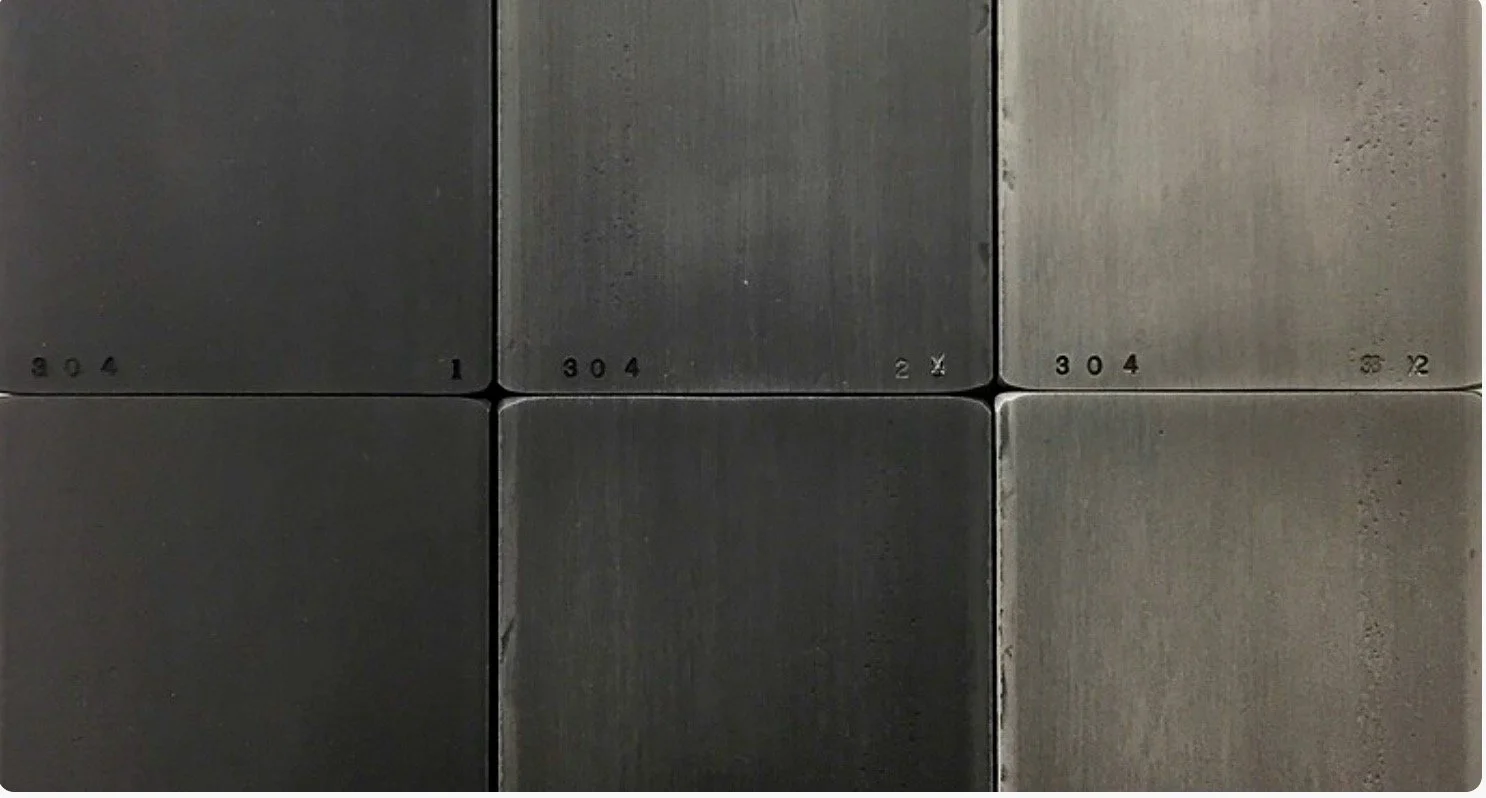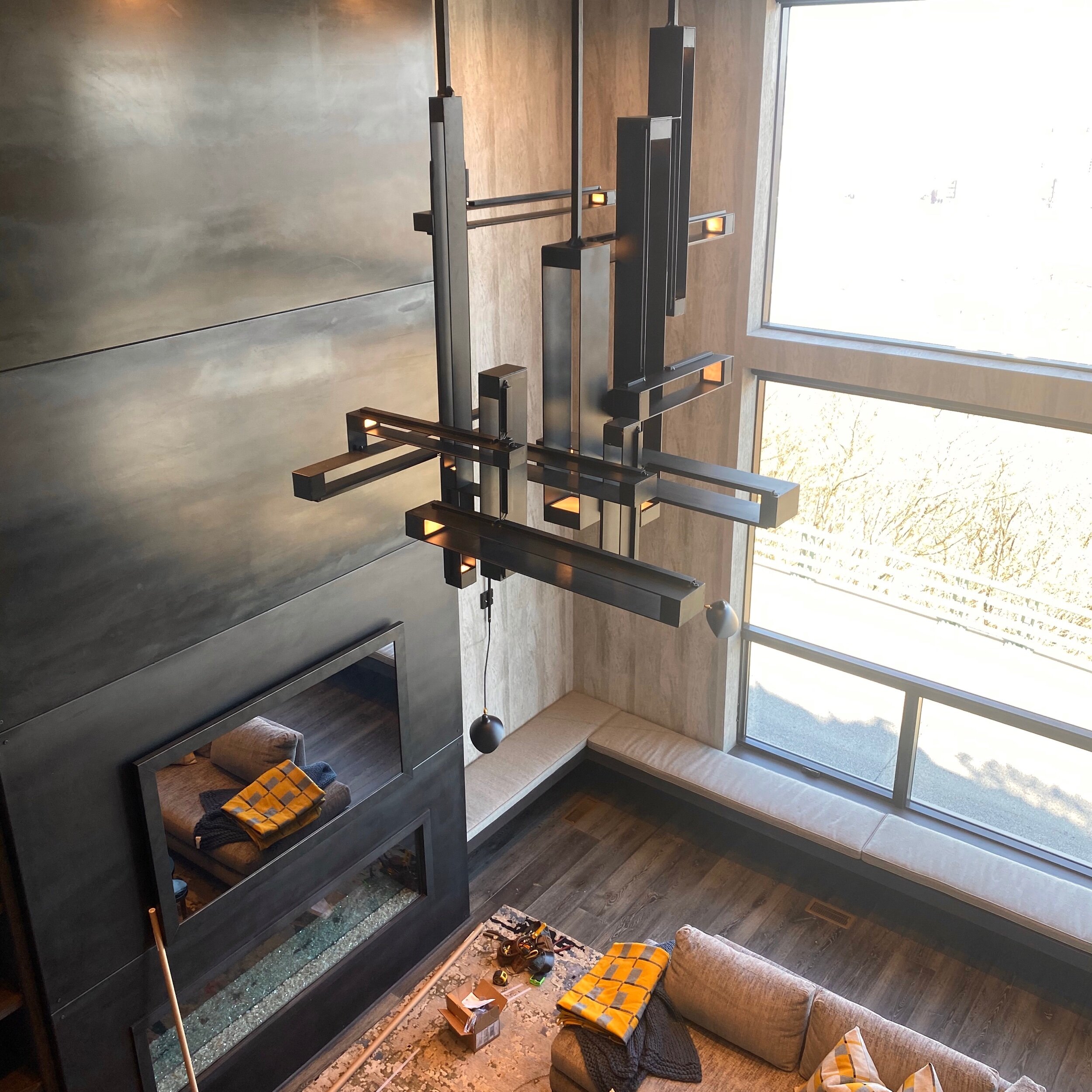Blackened Steel
Red Star Ironworks specializes in the art of blackened steel patinas. For over 20 years, we have perfected the technique of applying specialty finishes that highlight the inherent beauty of steel. After all, when so much care goes into every detail, why would we cover it with paint? When paired with other natural materials, it brings an earthy sophistication that enhances any space.
Blackened Steel
So What Is Blackened Steel
Here in Sun Valley, Ketchum and Hailey, Blackened steel is often specified on an architects drawing or as part of a designers’ specifications.
Blackened steel is a popular material for interior design applications due to its distinctive and modern look. It can be used for a variety of purposes, including staircases, railings, furniture, and decorative accents. When used in these applications, blackened steel can add a sleek and industrial touch to any space, while also providing durability and resistance to wear and tear.
In addition to its aesthetic appeal, blackened steel is also a versatile material that can be customized to suit a wide range of design styles. Depending on the level of oxidation, the finish can range from a light grey to a deep black, which allows for a range of design possibilities. The texture of the steel can also be manipulated, with options ranging from a smooth, polished finish to a more textured, rugged surface.
Another benefit of using blackened steel for interior applications is its ability to complement other materials. It pairs well with a variety of materials, including wood, glass, and concrete, which makes it a versatile choice for designers looking to create a unique and cohesive space.
Overall, blackened steel is a durable, versatile, and stylish material that can add a touch of sophistication and modernity to any interior design project.
Blackened Steel Range Hood in Ketchum Idaho
How is Blackened Steel Produced
The process of creating blackened steel involves several steps, each requiring a high level of attention to detail to ensure a quality finished product. The first step is to prepare the steel surface by removing any contaminants, such as oil or rust. This is critical for achieving a consistent and even finish.
Once the surface is prepped, a special coating is applied to the steel. This coating is typically a combination of chemicals, such as copper sulfate and potassium sulfide, that react with the steel when heated to create the desired blackened finish. It is important to apply the coating evenly, as any inconsistencies can lead to an uneven finish.
Depending on the desired finish, the steel can be heated to achieve an atmospheric finish. The temperature and duration of heating are carefully controlled to produce reliably repeatable results.
Once the steel has been heated, it is removed from the furnace and allowed to cool. The cooling process is also critical, as rapid cooling can cause the finish to crack or peel. Once cooled, the steel is carefully inspected for any defects or inconsistencies, such as uneven coloring or texture.
Overall, the process of creating blackened steel requires a great deal of attention to detail to ensure that the final product meets the desired quality standards. From surface preparation to heating and cooling, each step must be carefully executed to achieve a consistent and high-quality finish.
Blackened Steel Fireplace and Chandelier
The Limitations Of Blackened Steel
While blackened steel is a popular choice for interior design applications, it may not be the best option for exterior use in certain environments. One of the main limitations of blackened steel in exterior applications is its susceptibility to corrosion.
Despite the blackened finish providing some degree of protection against corrosion, it is still possible for the steel to rust and deteriorate over time, particularly in environments with high levels of moisture or salt exposure. This can compromise the structural integrity of the steel and result in the need for costly repairs or replacements.
Another limitation of blackened steel in exterior applications is its susceptibility to fading or discoloration over time, particularly when exposed to direct sunlight. This can result in a loss of the desired aesthetic effect and may require regular maintenance to maintain the finish.
Additionally, blackened steel may not be suitable for certain architectural styles or environments. Its modern and industrial aesthetic may not be compatible with traditional or historical buildings, and it may not be appropriate for use in areas with strict building codes or regulations.
Overall, while blackened steel can be a stylish and durable material for exterior applications, its limitations in terms of corrosion resistance, colorfastness, and suitability for certain architectural styles or environments must be carefully considered before selecting it for use in a project.


